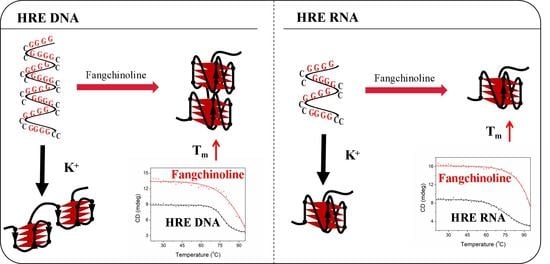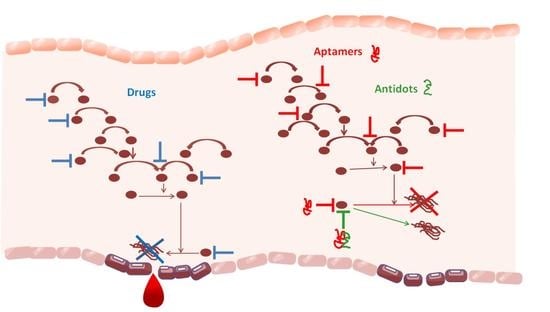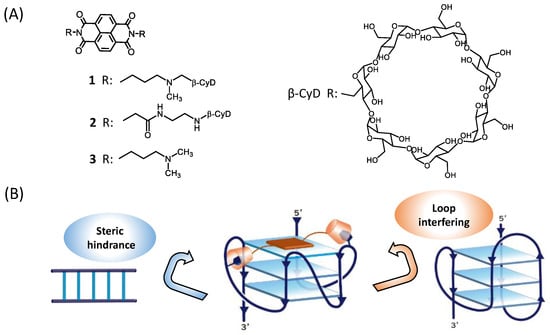Versatility of G-quadruplexes
Share This Topical Collection
Editors
 Dr. Anna Renata Dembska
Dr. Anna Renata Dembska
 Dr. Anna Renata Dembska
Dr. Anna Renata Dembska
E-Mail
Website
Collection Editor
Department of Bioanalytical Chemistry, Faculty of Chemistry, Adam Mickiewicz University, Poznan, Poland
Interests: G-quadruplex; i-motif; DNA probes; DNA-templated silver nanoclusters Bioassay development; bioanalysis
Special Issues, Collections and Topics in MDPI journals
 Dr. Anna S. Kichkailo
Dr. Anna S. Kichkailo
 Dr. Anna S. Kichkailo
Dr. Anna S. Kichkailo
E-Mail
Website
Collection Editor
Laboratory for Biomolecular and Medical Technologies, Krasnoyarsk State Medical University Named after Prof. V.F. Voyno-Yasenetsky, 660022 Krasnoyarsk, Russia
Interests: aptamer; intramer; cancer; biological activity, cell culture; in vivo experiments; tumor cells
 Dr. Joanna Kosman
Dr. Joanna Kosman
 Dr. Joanna Kosman
Dr. Joanna Kosman
E-Mail
Website
Collection Editor
Department of Bioanalytical Chemistry, Faculty of Chemistry, Adam Mickiewicz University, Poznan, Poland
Interests: G-quadruplex; DNAzyme; DNA probes; bioassay development; bioanalysis
Topical Collection Information
Dear Colleagues,
G-quadruplex, secondary tetraplex structures formed by DNA and RNA rich in guanosine residues, has gained interest due to its biological function as well as biomedical and bioanalytical applications. Sequences able to form G-quadruplexes were found in telomeres, promotors and other regulatory domains. The formation of G-quadruplexes was also visualized in vivo. The ongoing research in this field focuses on the understanding of the G-quadruplex function in genome as well as other nucleic acids in the cell (e.g., microRNA). On the other hand, G-quadruplexes are used in the development of many bioassays thanks to their outstanding abilities, such as structure switching (e.g., under the influence of cations), the formation of many aptamers, and the formation of DNAzyme with peroxidase activity. This versatility makes G-quadruplex an eligible target for biomedical and bioanalytical research.
Prof. Dr. Bernard Juskowiak
Dr. Anna Renata Dembska
Dr. Anna S. Kichkailo
Dr. Joanna Kosman
Collection Editors
Manuscript Submission Information
Manuscripts should be submitted online at www.mdpi.com by registering and logging in to this website. Once you are registered, click here to go to the submission form. Manuscripts can be submitted until the deadline. All submissions that pass pre-check are peer-reviewed. Accepted papers will be published continuously in the journal (as soon as accepted) and will be listed together on the collection website. Research articles, review articles as well as short communications are invited. For planned papers, a title and short abstract (about 100 words) can be sent to the Editorial Office for announcement on this website.
Submitted manuscripts should not have been published previously, nor be under consideration for publication elsewhere (except conference proceedings papers). All manuscripts are thoroughly refereed through a single-blind peer-review process. A guide for authors and other relevant information for submission of manuscripts is available on the Instructions for Authors page. Molecules is an international peer-reviewed open access semimonthly journal published by MDPI.
Please visit the Instructions for Authors page before submitting a manuscript.
The Article Processing Charge (APC) for publication in this open access journal is 2700 CHF (Swiss Francs).
Submitted papers should be well formatted and use good English. Authors may use MDPI's
English editing service prior to publication or during author revisions.
Keywords
- G-quadruplex structure
- biology of G-quadruplexes
- G-quadruplex probes
- G-quadruplex aptamers
- DNAzymes
- G-quadruplexes in medicine
- G-quadruplex in assay development
Published Papers (3 papers)
Open AccessArticle
G-Quadruplexes Formation by the C9orf72 Nucleotide Repeat Expansion d(GGGGCC)n and Conformation Regulation by Fangchinoline
by
Yun Zhang, Junliu Huang, Kainan Yu and Xiaojie Cui
Viewed by 1546
Abstract
The G-quadruplex (GQ)-forming hexanucleotide repeat expansion (HRE) in the
C9orf72 (C9) gene has been found to be the most common cause of amyotrophic lateral sclerosis (ALS) and frontotemporal dementia (FTD) (collectively, C9ALS/FTD), implying the great significance of modulating C9-HRE GQ structures in C9ALS/FTD
[...] Read more.
The G-quadruplex (GQ)-forming hexanucleotide repeat expansion (HRE) in the
C9orf72 (C9) gene has been found to be the most common cause of amyotrophic lateral sclerosis (ALS) and frontotemporal dementia (FTD) (collectively, C9ALS/FTD), implying the great significance of modulating C9-HRE GQ structures in C9ALS/FTD therapeutic treatment strategies. In this study, we investigated the GQ structures formed by varied lengths of C9-HRE DNA sequences d(GGGGCC)
4 (C9-24mer) and d(GGGGCC)
8 (C9-48mer), and found that the C9-24mer forms anti-parallel GQ (AP-GQ) in the presence of potassium ions, while the long C9-48mer bearing eight guanine tracts forms unstacked tandem GQ consisting of two C9-24mer unimolecular AP-GQs. Moreover, the natural small molecule Fangchinoline was screened out in order to be able to stabilize and alter the C9-HRE DNA to parallel GQ topology. Further study of the interaction of Fangchinoline with the C9-HRE RNA GQ unit r(GGGGCC)
4 (C9-RNA) revealed that it can also recognize and improve the thermal stability of C9-HRE RNA GQ. Finally, use of AutoDock simulation results indicated that Fangchinoline binds to the groove regions of the parallel C9-HRE GQs. These findings pave the way for further studies of GQ structures formed by pathologically related long C9-HRE sequences, and also provide a natural small-molecule ligand that modulates the structure and stability of C9-HRE GQ, both in DNA and RNA levels. Altogether, this work may contribute to therapeutic approaches of C9ALS/FTD which take the upstream C9-HRE DNA region, as well as the toxic C9-HRE RNA, as targets.
Full article
►▼
Show Figures
Open AccessReview
Aptamers Regulating the Hemostasis System
by
Anatoly A. Vaganov, Tatiana E. Taranushenko, Natalia A. Luzan, Irina A. Shchugoreva, Olga S. Kolovskaya, Polina V. Artyushenko, Tatiana N. Zamay and Anna S. Kichkailo
Cited by 3 | Viewed by 2413
Abstract
The hemostasis system is a complex structure that includes the fibrinolysis system, and Yes this is correct coagulation and anticoagulation parts. Due to the multicomponent nature, it becomes relevant to study the key changes in the functioning of signaling pathways, and develop new
[...] Read more.
The hemostasis system is a complex structure that includes the fibrinolysis system, and Yes this is correct coagulation and anticoagulation parts. Due to the multicomponent nature, it becomes relevant to study the key changes in the functioning of signaling pathways, and develop new diagnostic methods and modern drugs with high selectivity. One of the ways to solve this problem is the development of molecular recognition elements capable of blocking one of the hemostasis systems and/or activating another. Aptamers can serve as ligands for targeting specific clinical needs, promising anticoagulants with minor side effects and significant biological activity. Aptamers with several clotting factors and platelet proteins are used for the treatment of thrombosis. This review is focused on the aptamers used for the correction of the hemostasis system, and their structural and functional features. G-rich nucleic acid aptamers, mostly versatile G-quadruplexes, recognize different components of the hemostasis system and are capable of correcting the functioning.
Full article
►▼
Show Figures
Open AccessArticle
Naphthalene Diimides Carrying Two β-Cyclodextrins Prefer Telomere RNA G-Quadruplex Recognition
by
Tingting Zou, Yuka Sato, Shuma Kaneyoshi, Kota Mano, Rui Yasukawa, Yoshifumi Nakano, Satoshi Fujii, Shinobu Sato and Shigeori Takenaka
Cited by 1 | Viewed by 2156
Abstract
Newly synthesized naphthalene diimide carrying two β-cyclodextrins (NDI-β-CyDs) showed improved specificity for the parallel G-quadruplex structure alongside the hybrid G-quadruplex structure. Specifically, the highest binding affinity of NDI-β-CyDs for the telomere RNA G-quadruplex was observed. The binding simulation indicated that β-cyclodextrins might be
[...] Read more.
Newly synthesized naphthalene diimide carrying two β-cyclodextrins (NDI-β-CyDs) showed improved specificity for the parallel G-quadruplex structure alongside the hybrid G-quadruplex structure. Specifically, the highest binding affinity of NDI-β-CyDs for the telomere RNA G-quadruplex was observed. The binding simulation indicated that β-cyclodextrins might be available for loop nucleobase inclusion under its complex.
Full article
►▼
Show Figures











